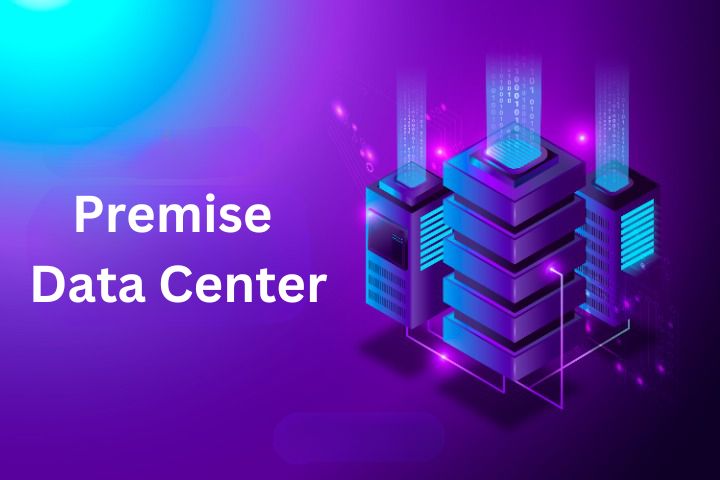Consumption-Based On-Premise Data Center: A New Era

Premise Data Center: The economic and operational advantages of cloud computing make it one of the choices for companies today. In fact, many organizations are moving “low-impact” activities to the public cloud.
Stop moving to consumption-based IT. However, many organizations need to operate with on-premises data centers for reasons ranging from latency to reliance on legacy applications to regulatory compliance. Even for these companies, however, there is an opportunity to take advantage of the benefits of the cloud, such as speed and agility, for activities that must remain on the premises.
It is a strategic choice that can benefit the business, such as increased operational efficiency and cost reduction. Let’s see the top 5.
Reduce unnecessary purchases ahead of schedule.
Overprovisioning is a widespread practice in IT departments. A recent report from Futurum Research, which examined the costs of enterprise purchasing strategies in 2020, reveals that among those who purchased storage as a capital expense last year, 97% of them overprovisioned by 10 % or more and 44% overprovisioned by 25% or more. Regarding computing capacity, 85% of the sample analyzed focused on overprovisioning, with percentages ranging from 10% to 50%.
The logic behind it is that I buy a little more than I need so I’m safe for future needs. In fact, 70% of Futurum Research respondents said they were very confident (or extremely confident) in accurately predicting their organization’s storage needs over the next three years. Except then to declare that he still found himself short of storage and/or computing capacity. Despite overprovisioning, almost half ( 47% ) of the sample said they had run out of storage capacity and 41% of computing capacity.
A pay-as-you-go system, on the other hand, allows you to avoid upfront costs for equipment that you may not be using and always to have all the storage and computing capacity you need available, paying only for what is used. A Forrester study found that those using pay-per-use infrastructure, such as Netmind’s IaaS infrastructure with HPE GreenLake service, realize a 30% TCO savings by eliminating the need for overprovisioning. This offers the opportunity to reallocate important economic resources to other business areas.
Accelerate IT scalability to respond quickly to business needs.
Having an as-a-service data center, on-premise means always having all the storage and computing resources you need at home. This applies to current needs but also to any future increases.
If the computational or storage needs increase for business needs, the number of available resources can be increased rapidly and fluidly. Thus, you are able to respond quickly to business needs. There is no need to place an order and wait for the time necessary for the products to be delivered, installed, and configured. They are ready; just activate them.
3 . Decrease the risk that the purchased technology becomes obsolete
Creating an on-premise data center means purchasing the equipment to build IT infrastructure by sizing them appropriately so that they can meet current needs. Still, also they can support possible evolutions in the short to medium term. Whatever path you take, the technology purchased must be maintained, and the management software must be constantly updated. This implies an expense also in personnel and support, with the risk that, within some time, this technology may become obsolete. With this in mind, resisting the temptation to overprovision is difficult.
An “Infrastructure as a Service” approach with the on-premise data center eliminates both the danger of obsolescence and the need for maintenance and updating (and, therefore, the corresponding costs). In fact, the service provider takes care of these aspects, which always makes the most recent technology available with the latest updates.
Reduce energy consumption
Overprovisioning goes hand-in-hand with underutilization of resources, a common symptom of inefficient IT. Levels of IT usage in the industry are still estimated at around 25% (data from the Uptime Institute). By increasing utilization rates and avoiding the need for overprovisioning, you can significantly improve the energy efficiency of your IT infrastructure.
A pay-per-use model allows you to optimize the use of IT infrastructure to closely align resource consumption with business needs, cutting much of the waste of traditional on-premise operations.
Transform capital expenditures into operating expenses
The purchase of an asset such as IT infrastructure is an expense that should be included in capital expenditure. This means that it involves an important investment and that the benefits will be seen over a medium-long term, with the risk that the equipment has already become obsolete in this period of time.
Conversely, the costs of a pay-as-you-go service are operating expenses, and this can lead to a return on investment in the short term. It is understood that the pay-per-use costs refer only to the resources actually used.
Also Read : When a Disaster Recovery Plan Is Data Breach-Proof






